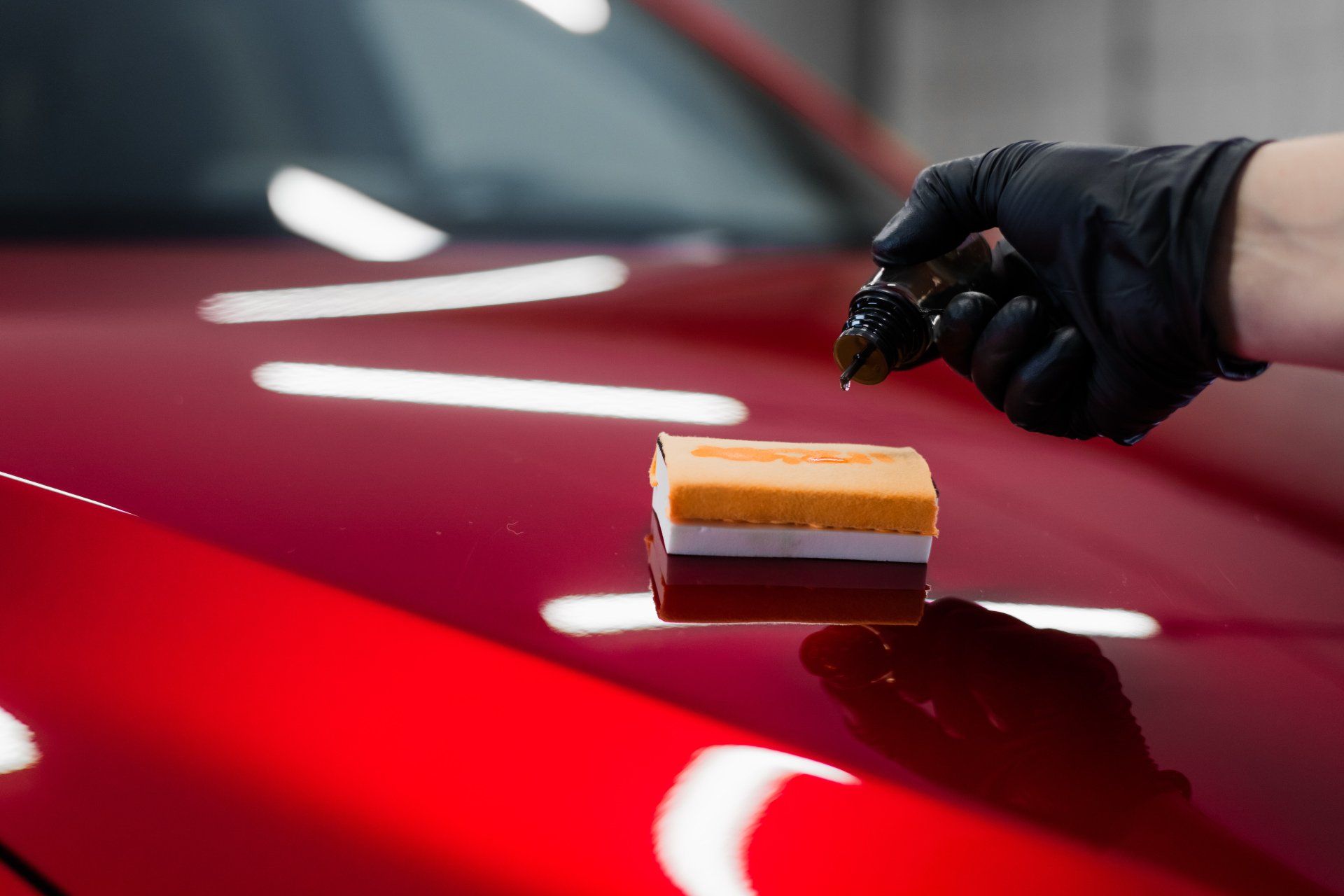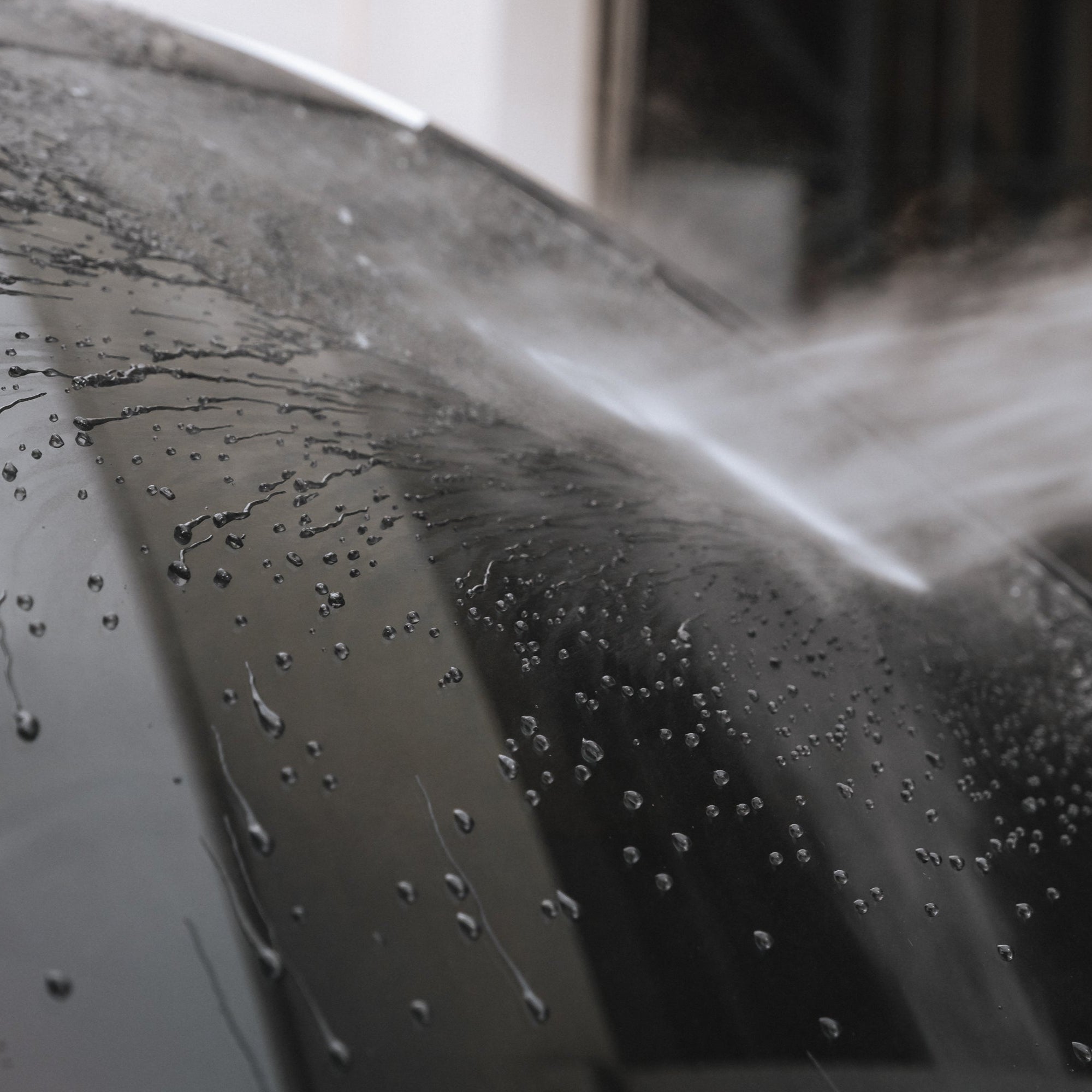Professional Tips for Do It Yourself Ceramic Coating Application at Home
Professional Tips for Do It Yourself Ceramic Coating Application at Home
Blog Article
The Value of Ceramic Coating: Protecting Your Car's Outside With Accuracy
In an age where maintaining the practical and aesthetic honesty of your automobile is extremely important, ceramic layer becomes a crucial option. This protective layer not only guards against environmental misfortunes however also elevates the visual appeal of your cars and truck. With its unique bonding buildings, ceramic coating supplies a degree of security that much surpasses conventional waxing approaches. How precisely does it attain such remarkable results? As we check out the nuances of its application and compare it to other choices, one can not aid but wonder regarding the specifics that make this innovation essential for modern cars and truck care.
Benefits of Ceramic Coating
When it involves preserving an auto's visual appeal, ceramic finishing supplies substantial advantages. This advanced protective layer provides a resilient guard versus ecological impurities, consisting of dirt, gunk, and harmful UV rays. By creating a semi-permanent bond with the vehicle's paint, ceramic layers successfully prevent oxidation and fading, making certain that the automobile maintains a glossy, showroom-like coating for an extensive period. This not just improves the car's aesthetic allure but likewise adds to its long-term worth.
Along with its protective qualities, ceramic finishing supplies remarkable hydrophobic properties, causing water and other liquids to bead off effortlessly. This feature streamlines the cleansing procedure, as dust and debris are less likely to follow the surface, decreasing the frequency and effort needed for upkeep. The covering's resistance to chemical discolorations from acidic pollutants like bird droppings and tree sap is another significant benefit, decreasing possible paint damage.
Ceramic finishes additionally enhance scrape resistance, giving a layer that can take in minor abrasions and swirl marks. This characteristic is particularly valuable in maintaining an immaculate surface area, decreasing the chance of visible flaws and preserving the stability of the vehicle's paintwork gradually.

Just How Ceramic Coating Works
Recognizing the technicians behind ceramic coating exposes its effectiveness as a safety remedy for vehicles. Ceramic finishings are basically fluid polymer applications that chemically bond with a vehicle's factory paint, producing a safety layer. This layer works as an obstacle against ecological impurities such as ultraviolet, grime, and dust rays, which can weaken an automobile's outside over time. The vital component in ceramic covering is silicon dioxide (SiO2), which stems from quartz crystals and is understood for its extraordinary hardness and sturdiness.
Application of ceramic layer entails a careful process. The automobile's surface area should be thoroughly cleansed and sanitized to ensure optimal adhesion. Once used, the fluid polymer develops a semi-permanent bond with the paint, setting into a clear, resilient shield. This guard improves the vehicle's gloss and hydrophobic properties, assisting in less complicated cleansing by triggering water and pollutants to bead and slide off easily.
Moreover, the finish's molecular structure offers resistance to minor scrapes and chemical stains. Unlike waxes or sealers that sit on top of the paint, ceramic finishes incorporate with the surface, offering durable protection. This assimilation is essential to its efficiency, making sure the vehicle's finish remains beautiful for years.
Comparing Ceramic Coating to Alternatives
In the realm of automotive security, ceramic covering stands as a formidable choice when contrasted to typical options such as waxes and sealers. While waxes supply a momentary shiny surface, usually lasting just a couple of weeks to months, ceramic layers supply a longer-lasting option, often sustaining for years. This longevity is credited to the chemical bonding that occurs when ceramic layers are used, creating a solid layer that is resistant to ecological threats.
Contrastingly, sealers, although more resilient than waxes, still disappoint the durable defense supplied by ceramic coatings. Sealers can typically last for up to a year, offering a synthetic guard versus specific components. They do not have the superior hydrophobic buildings and UV security that ceramic coatings supply.
In addition, ceramic finishes supply enhanced scrape investigate this site resistance, which neither waxes neither sealants can successfully match. In summary, while conventional waxes article and sealers provide basic protection, ceramic coatings offer a thorough, lasting remedy that dramatically protects the car and boosts's exterior surface.
Application Process Discussed
Applying ceramic covering to a car requires a thorough procedure to make sure optimal outcomes and durability. Once cleaned up, the car is dried out and polished to get rid of any blemishes, as any kind of existing swirls or scrapes can end up being more obvious after the coating is used.
Adhering to surface area prep work, the application of the ceramic finishing starts. Making use of an applicator pad, the ceramic covering is applied in tiny sections to ensure also protection.
After application, the covering requires a details curing duration, throughout which the vehicle ought to be safeguarded from water and pollutants. This healing process can differ depending on the item however typically ranges from 24 to two days. Eventually, this in-depth procedure is critical in achieving a resistant and glossy finish.
Upkeep Tips for Durability
To keep the longevity of a ceramic finishing, adherence to a regimented upkeep regimen is crucial. Avoid automatic automobile washes, as their rough brushes can endanger the coating's stability.
Post-wash, drying out the automobile with a clean microfiber towel protects against water spots that might degrade the finish in time. Furthermore, use a ceramic coating booster every few months. These boosters strengthen the hydrophobic homes and boost the finish's safety capabilities, ensuring it see this stays efficient versus contaminants.
Remember that car parking locations play a critical function in maintenance. ceramic coating. Whenever feasible, park in shaded areas to decrease UV exposure, which can gradually deteriorate the finish. For long-lasting storage space, think about using an auto cover for added protection versus environmental elements
Verdict
In final thought, ceramic covering serves as a crucial protective layer for vehicle exteriors, supplying resilient protection against environmental aspects such as grime, uv, and dirt rays. Recognizing the application process and adhering to maintenance recommendations are necessary for taking full advantage of the long life and performance of ceramic coating.
When it comes to protecting a car's aesthetic charm, ceramic finish offers considerable benefits. By forming a semi-permanent bond with the automobile's paint, ceramic coverings successfully stop oxidation and fading, making certain that the automobile preserves a shiny, showroom-like coating for an extended duration. Ceramic coverings are essentially liquid polymer applications that chemically bond with a vehicle's factory paint, developing a safety layer. In summary, while typical waxes and sealers provide basic defense, ceramic finishes provide a comprehensive, lasting option that substantially protects the vehicle and boosts's outside surface.

Report this page